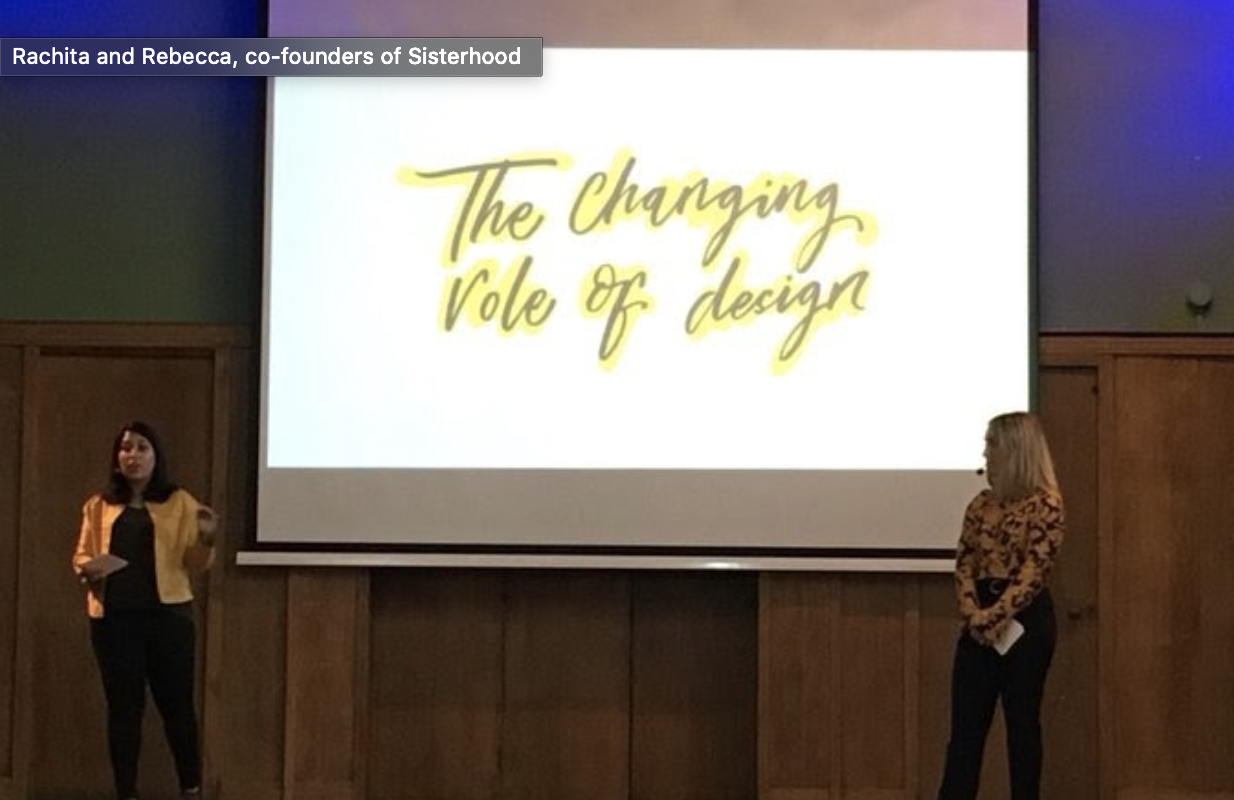
When Rachita Saraogi and Rebecca Thomson were studying design at Central Saint Martins, they noticed a trend that would ignite their desire to start Sisterhood. “Sisterhood began as a research project,” explains Saraogi. The number of women who studied design did not match the number of women working in the field. The two friends and students wanted to find out why. Their research was initially on career women, those already working in design and who could provide insight into why there was such a gender gap in the design industry. It was during this research that they shifted from career women to adolescent girls (aged 13-17). “We assembled a group of women into a panel discussion, and one of the things that came up was that their confidence-building and knocks to confidence began at a very specific age,” says Thomson. “We wanted to get to the root of the problem.”
And that’s how Sisterhood began. A social enterprise focused on the empowerment of young girls, it’s rooted in design skills and training. This training goes beyond the visual aspects of design. “What is unique to us is we focus on design thinking – we teach the girls through double diamond technique and this is what they use to go from problem to solution,” say Saraogi and Thomson. The pair focus on working with adolescent girls in high schools and after-school programs to build the confidence and self-esteem necessary to navigate a male-dominated industry and challenge conceptions on gender equality and body positivity. For Saraogi and Thomson, it was crucial for their work to connect to young girls. Living in an environment full of adverts and visuals that portray a particular image of femininity and womanhood, learning design skills and being part of workshops can be a powerful way to claim agency, create an avenue of self-expression and design their space in the world. One of their biggest projects was a workshop with high school students, where they worked to design the icon used by Amnesty International during Refugee Week in 2018.
Saraogi and Thomson have had multiple projects in partnership with schools, but their two biggest school projects have been with School 21 and Hackney Laces. The Sisterhood co-founders are always excited to go into schools and meet with students, not only showing them how they can use design elements but also how young girls can contribute to the field. Thomson believes that going to the schools is an important step in establishing a relationship. “It’s good for us to go into space where they (the students) are comfortable. It’s meeting them in their space.” Their latest school visit was during an assembly, where the pair did a presentation using design elements that students would be exposed to regularly: magazine cut-outs, adverts, images of billboards and marketing campaigns. It was a huge success. “It was very noisy, there was a lot of noise! The girls got so excited because they could relate to what they saw,” says Saraogi. Going forward, Sisterhood wants to do more school presentations and day workshops in collaboration with different partners. Sisterhood also plans on organizing a two-week summer school, where participants will not only receive design training but pitch to prospective clients and companies.
What began as research into the gendered world of design has culminated in an enterprise to build the confidence and skills of young girls and teenagers. For Saraogi and Thomson, Sisterhood is a way to educate young girls and challenge gender norms with design thinking and training. Moving forward, Sisterhood wants to expand into different cities and establish design hubs where high school students can come in and work in a safe, secure space. With every workshop and every project, Rachita Saraohi and Rebecca Thomson illustrate the importance of building the confidence of young girls in shaping and designing a better world.
